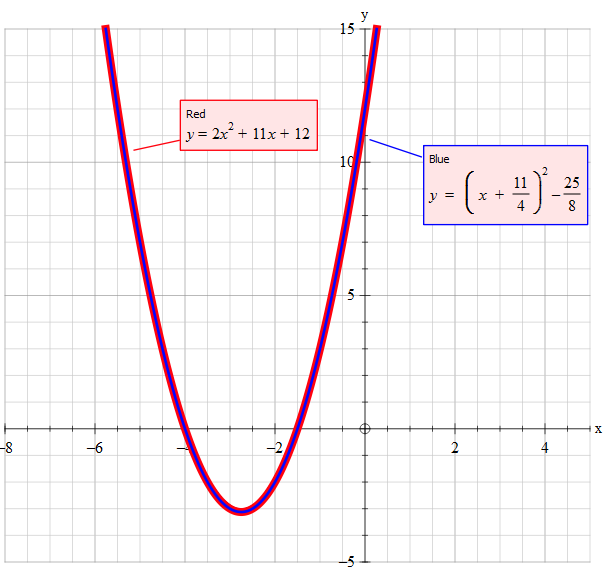What is the vertex form of #y=2x^2+11x+12#?
2 Answers
Yhe vertex form is
Explanation:
To find the vertex form, you complete the square
The vertex is
The symmetry line is
graph{(y-(2x^2+11x+12))(y-1000(x+11/4))=0 [-9.7, 2.79, -4.665, 1.58]}
Explanation:
Consider the standardised form of
The vertex form is:
~~~~~~~~~~~~~~~~~~~~~~~~~~~~~~~~~~~~~~~~~~~~~~~~~~~~~~
By rewriting the equation in this form you introduce an error. Let me explain.
Multiply out the bracket in
the
~~~~~~~~~~~~~~~~~~~~~~~~~~~~~~~~~~~~~~~~~~~~~~~
Given:
But:
So by substitution we have:
~~~~~~~~~~~~~~~~~~~~~~~~~~~~~~~~~~~~~~~~~
The two equation have been plotted to show that they produce the same curve. One is thicker than the other so that they can both be seen.




